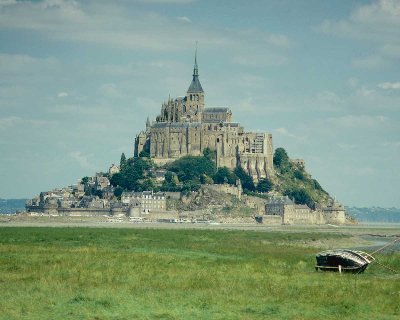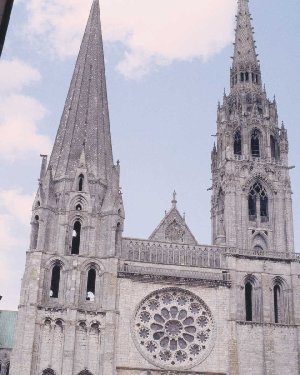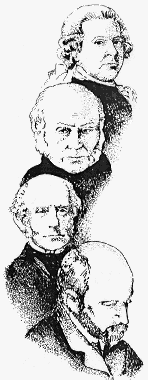Adams's Education
Today, a nineteenth-century intellectual struggles with the twentieth century. The University of Houston's College of Engineering presents this series about the machines that make our civilization run, and the people whose ingenuity created them.
Our second president, John Adams, sired a dynasty. His son John Quincy was also president, and his grandson Charles was a congressman and Ambassador to England during the Civil War. In his autobiography, The Education of Henry Adams, John Adams' great-grandson, Henry Adams, measures himself against his extraordinary forebears and finds himself wanting -- even though he was a writer, congressman, and noted historian.
Adams portrays himself as a sort of everyman facing the juggernaut of twentieth-century technology. His chapter The Dynamo and the Virgin takes us through the 1900 Paris Exhibition. Adams was one of forty million visitors to its eighty thousand exhibits. He was drawn back day after day, trying to understand it all.
Adams' most important works of history had been studies of the abbey at Mont-St-Michel and Chartres Cathedral. They'd led him to see the remarkable impact of medieval Christianity, centered as it was on the Virgin Mary. Now he gazed at wholly new technologies that'd sprung into being in just a few years: dynamos, telephones, automobiles -- invisible forces of radiation and electric fields.
He realized that the dynamo would shake Western civilization just as surely as the Virgin had changed it in medieval Europe. Historical hindsight made him comfortable with the twelfth century, but the Paris Exhibition was too much to digest.
His guide through the Exhibition was the aeronautical pioneer Samuel Pierpoint Langley. Langley was a down-to-earth physicist, explaining things in functional terms. But Adams was too intelligent to take "this-is-how-it-works" for understanding. He says:
[I found myself] lying in the Gallery of Machines -- my historical neck broken by the sudden irruption of forces totally new.
Adams didn't mention two ideas completing the intellectual devastation -- quantum mechanics and relativity theory. But, on a visceral level, he saw them thundering down the road. It was clear enough to Adams, as he listened to Langley, that Victorian confidence in science had outrun itself.
In the end, Adams lamented the blind spot of his times, the denial of mystery. The Virgin was the mystery that drove the medieval technological revolution. He says,
Symbol or energy, the Virgin had acted as the greatest force the Western world ever felt, and had drawn [our] activities to herself more strongly than any other power, natural or supernatural, had ever done.
The dynamo and modern science were ultimately being shaped by forces no less mysterious. Langley didn't understand radium or electricity any more than Adams himself did.
Technology and science left the exhibition hall changed beyond recognition. Once the terrible implications of quantum mechanics emerged, we realized that science, too, is a glass through which we only glimpse the mysteries of our being.
I'm John Lienhard, at the University of Houston, where we're interested in the way inventive minds work.
(Theme music)
Adams, H., The Education of Henry Adams. New York: The Heritage Press, 1918 (or one of the many subsequent printings) See especially Chapter 25 and, to some extent, the subsequent chapters.
This is a greatly revised version of Episode 131.


The two structures on which Henry Adams did the definitive studies, the Abbey at Mont-St-Michel and Chartres Cathedral

Four generations of the Adams family
Drawing by Maria Zsigmond-Baca.
By permission of Peter Gordon